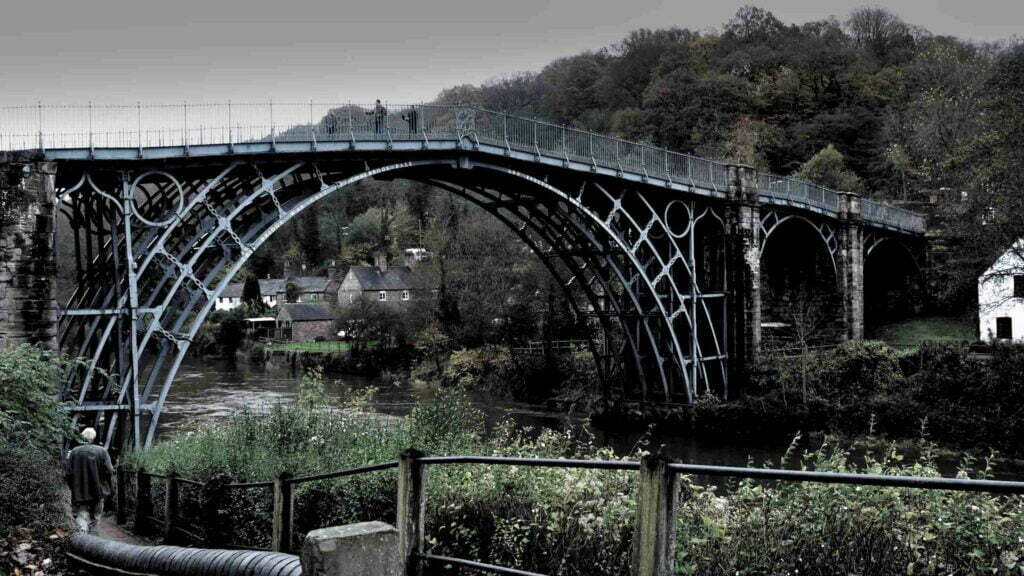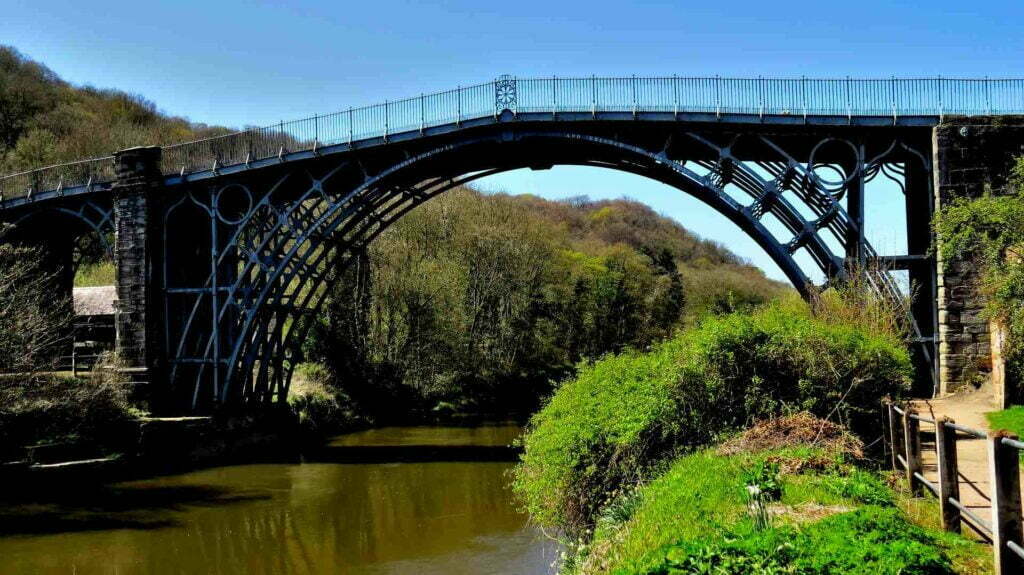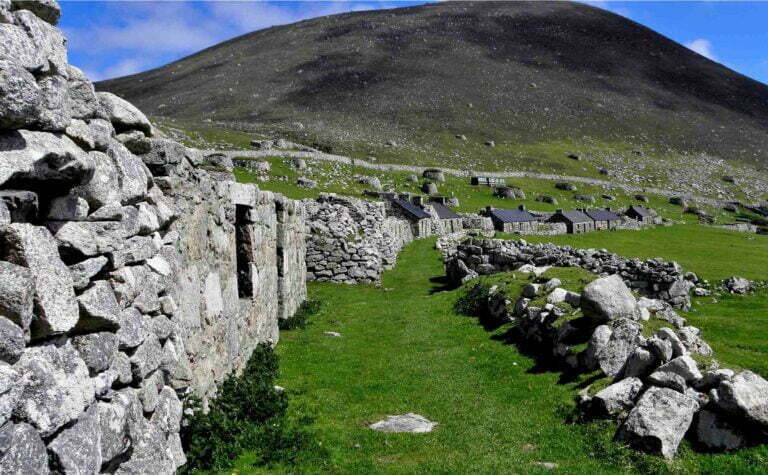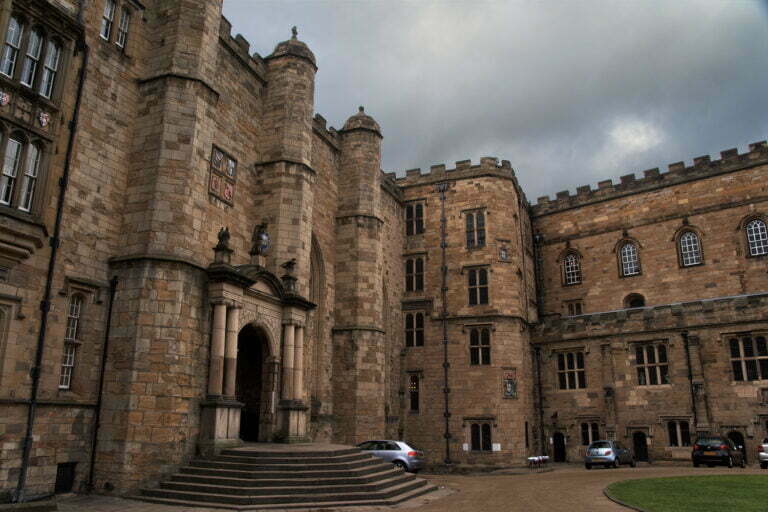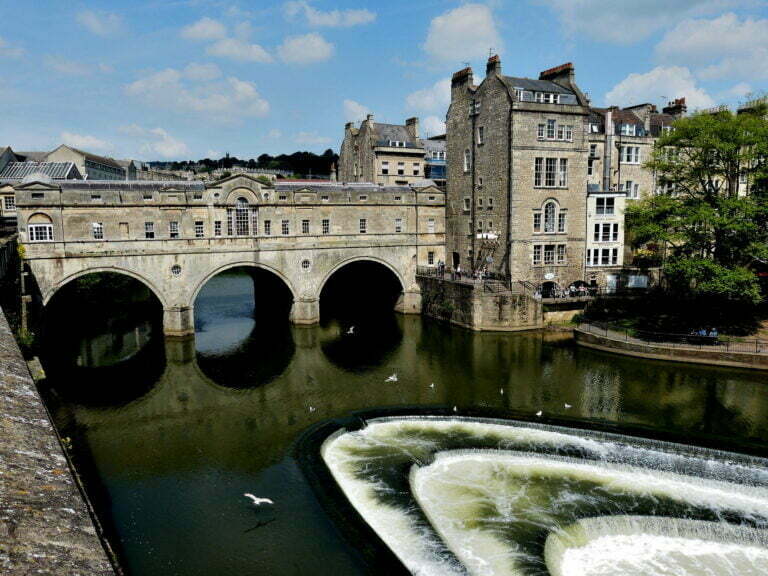Ironbridge is a structure that crosses the River Severn near Ironbridge, Shropshire, England. It is often written as “Iron bridge.” Most people think it was the first bridge made of cast iron.
The Ironbridge Gorge is a UNESCO World Heritage Site that includes the bridge, the town of Ironbridge, and the Ironbridge Gorge. Ironbridge is now one of Britain’s most important landmarks.
Iron Bridge England
The half-circle arch of the bridge spans 30.6 meters (100.5 feet) and is made of five arch ribs that each have two parts. Between 1777 and 1779, the iron bridge was built. The plans were made by either Abraham Darby or Thomas Pritchard.
The same bridge was made in France a few years ago, but it was never built. Even though the arch is a little bit squashed, the bridge started charging tolls in 1781 and people walked across it until 1950.
Ironbridge is both the name of a town in Shropshire and the world’s first iron bridge. Abraham Darby III built the bridge over the River Severn. The iron for the bridge was made in nearby foundries.
Ironbridge Gorge England
Ironbridge is on the banks of the Severn River, where houses and businesses now cling to the cliffs of the Severn Gorge. It is also the place where things happened two hundred years ago that changed our lives forever.
During the Ice Age, this unique system of industry and nature came into being. When the river’s original flow was changed to make the famous gorge, important layers of limestone, coal, ironstone, and clay were exposed. People could get water, electricity, and an easy way to get around thanks to the river.
All of these important things were brought together by Abraham Darby I, a great thinker who was born in the nearby town of Dudley in 1677.
In 1709, he was the first person to figure out that coke, which is cheaper than charcoal, could be used instead of charcoal to make iron. He rented an old furnace in Coalbrookdale so he could do this.
Darby was the first person to make strong, thin pots for the poor out of iron instead of brass, which was more expensive. Darby was the son of a Quaker farmer. While his son, Abraham Darby II, was in charge, the Coalbrookdale works grew and did well (1711–63).
Over the next few decades, Ironbridge made a lot of firsts, including cast iron rails, iron wheels, steam cylinders, steam locomotives, iron boats, and, most famously, the first iron bridge, which is still standing.
Abraham Darby III began building the bridge across the Shropshire gorge in November 1777. It is 30 meters (100 feet) long. 378 tons of cast iron are used to make it.
The Iron bridge was done in 1779. The balustrade, the road surface, and the toll house were all set up. The first tolls were taken on January 1, 1781.
The beautiful Severn Gorge had been changed by iron foundries, kilns, and fires. It was now a busy, smoke-filled port that was dark and shadowy even on sunny days.
There is no longer dirt and thick smoke, and the area has changed. The quarries have been taken over by nature, which has turned them into green forests with lots of animals, wildflowers, and clean streams running through them.
Still, Ironbridge is a great place to visit. From Buildwas, you can get to places like Coalbrookdale, Coalport, Jackfield, and Broseley by taking the roads that run along the river. All of these places have left an indelible mark on the industrial history of the world, which is why the Gorge was named a UNESCO World Heritage Site in 1986.
Ironbridge Gorge World Heritage Site
Now, a few places are making an important part of British and world history come to life. At the Ironbridge Gorge Museums, you can find out how the Industrial Revolution got started.
Start at the Gorge Museum, where an 8-minute video gives a good overview. Look for an exhibit of things that have something to do with Captain Matthew Webb. In 1875, he was the first person to swim across the English Channel.
He was born nearby 150 years ago. The “Shaftesbury Acts” were based on what Webb’s doctor father said about how bad things were in Ironbridge’s iron mines and iron industry.
The Museum of Iron in Coalbrookdale tells the story of when the area was the world’s most important industrial center, starting with Abraham Darby’s first iron smelting using coke in 1709.
Nearby is Enginuity, which opened in the fall of 2002 and lets people do things with their hands. It shows how everyday things are made in four areas called Materials, Energy, Design, and Systems and Controls.
The Coalport China Museum is also in the Ironbridge Gorge. The National Collections of Coalport and Caughley china are kept in old buildings along the riverfront. Before 1926, this was one of the best places in Europe to make porcelain.
The old Craven Dunnill Works is now the Jackfield Tile Museum, which is on the other side of the river in Jackfield. It will reopen this summer with a great collection of gas-lit rooms and rooms set up in the style of the time.
The last of the many ceramics industry displays in the area is a mile south at the Broseley Pipeworks. After 350 years of work, the last person who made clay pipes the old way closed up shop in 1957.
On the north bank of the Severn, on 50 acres, is a living history museum called Blists Hill Victorian Town. It shows how people used to live more than a century ago.
In this recreation of a small industrial town on the former East Shropshire coalfield at the turn of the nineteenth century, visitors can watch “Victorian” residents go about their daily lives.
The Ironbridge Gorge Museum runs ten different places, and visitors can buy a passport ticket that lets them visit all ten, no matter how long it takes.
Roads make it easy to get to Ironbridge. Telford and Wolverhampton both have train stations that are close to each other.
